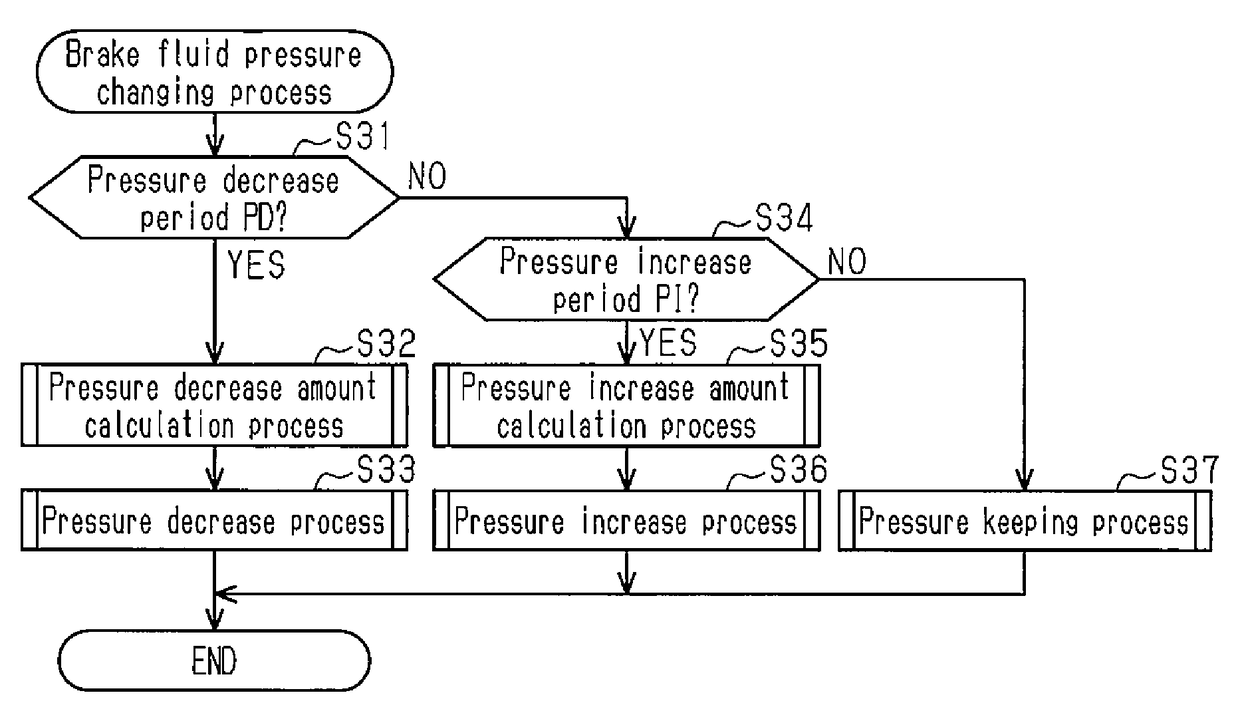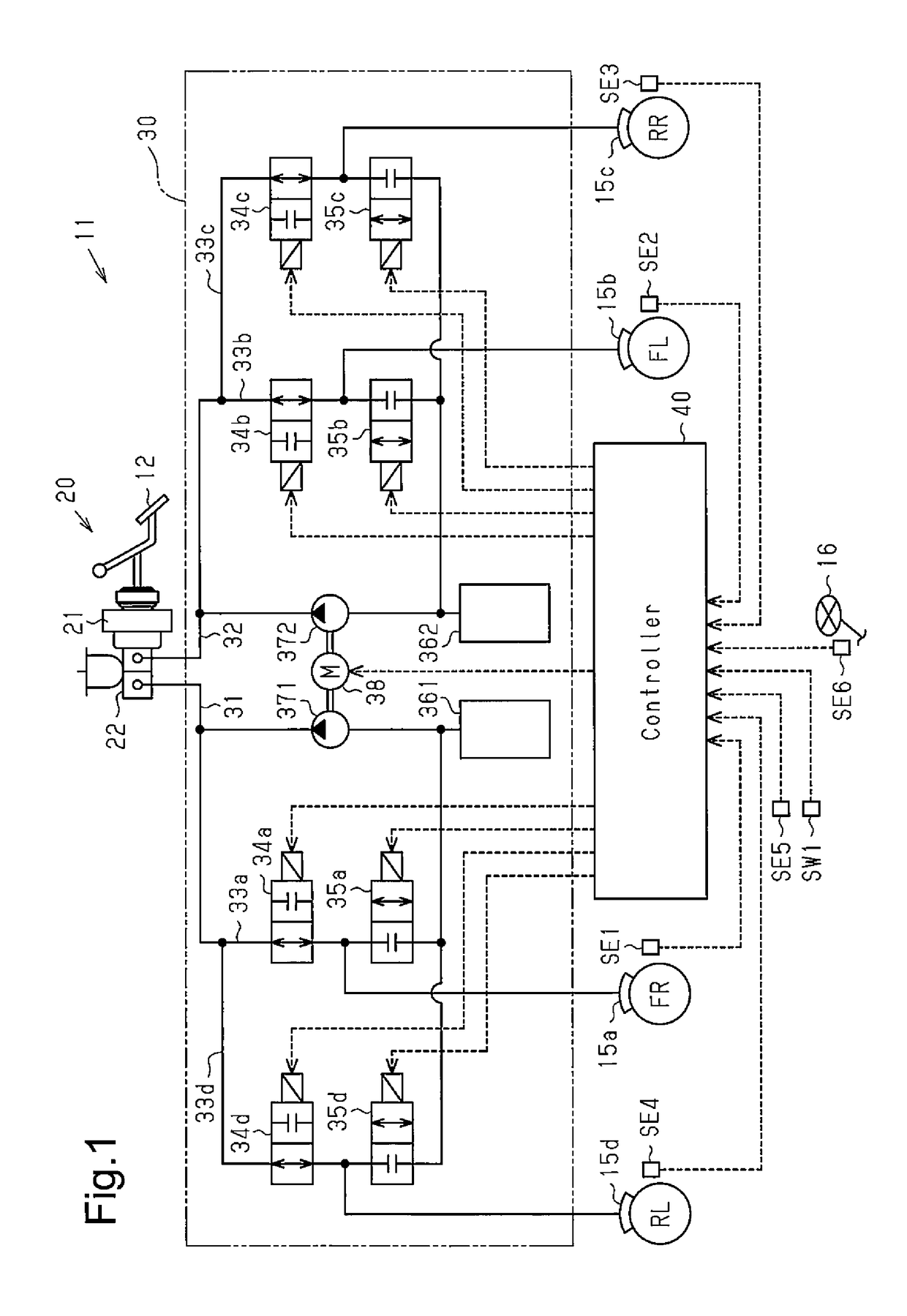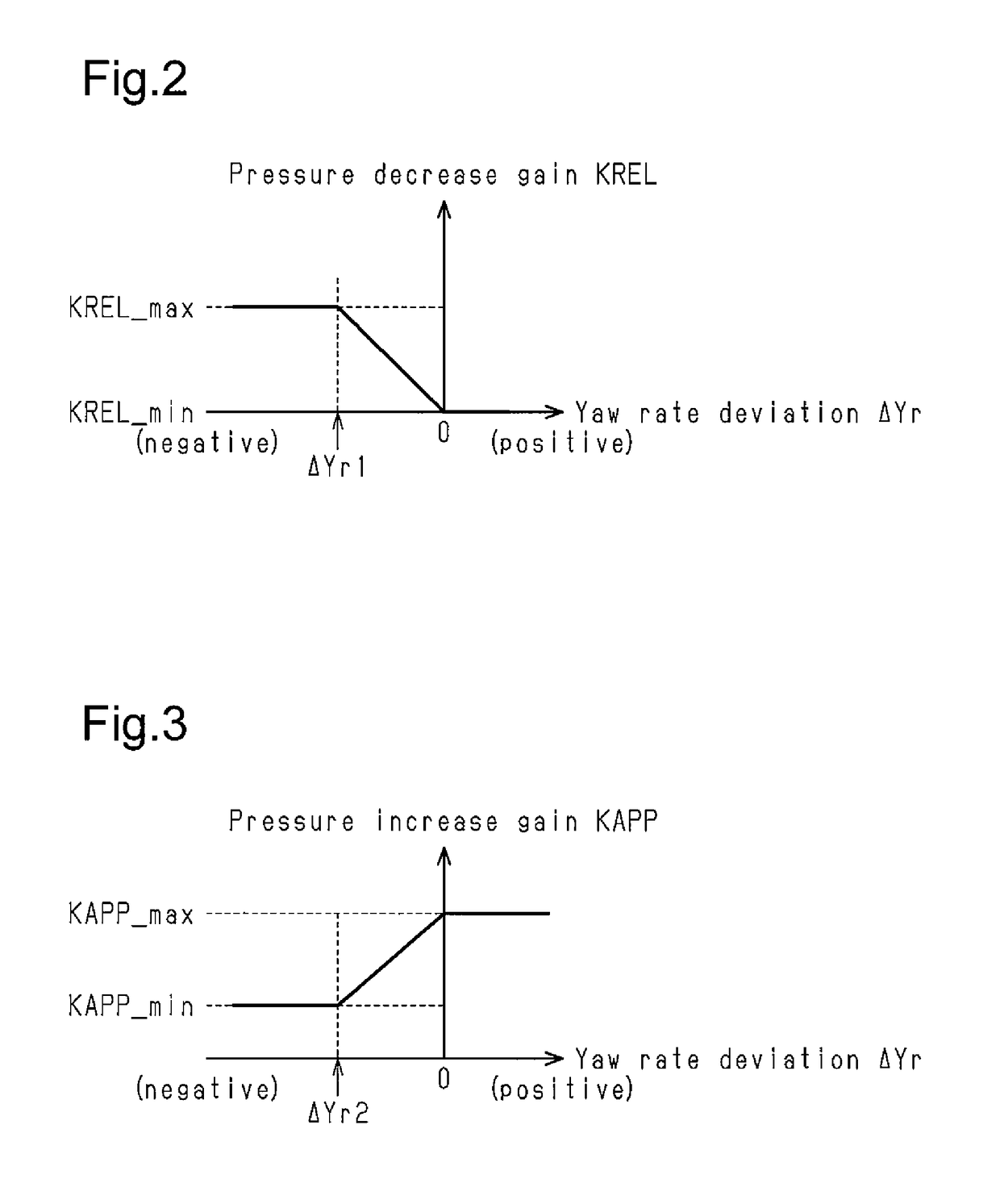Vehicle brake control device
a technology of brake control and high- side wheel, which is applied in the direction of brake system, vehicle components, transportation and packaging, etc., can solve the problem of tensile behavior and achieve the effect of ensuring the stability of vehicle behavior and increasing the braking force of high- side wheel
- Summary
- Abstract
- Description
- Claims
- Application Information
AI Technical Summary
Benefits of technology
Problems solved by technology
Method used
Image
Examples
Embodiment Construction
[0025]A vehicle brake control device according to one embodiment will now be described with reference to the drawings.
[0026]As shown in FIG. 1, a braking device 11 is installed in a vehicle that has a plurality of (four in the present embodiment) wheels (a front right wheel FR, a front left wheel FL, a rear right wheel RR, and a rear left wheel RL). The braking device 11 includes a fluid-pressure generating device 20, to which a brake pedal 12 is coupled, a brake actuator 30, which adjusts braking force on the wheels FR, FL, RR and RL, and a controller 40, which is an example of a brake control device and controls the brake actuator 30.
[0027]The fluid-pressure generating device 20 includes a booster 21, which boosts the braking force applied by the driver on the brake pedal 12, and a master cylinder 22, which generates brake fluid pressure (hereinafter also referred to as MC pressure) in accordance with the braking force boosted by the booster 21. When the driver is applying brakes,...
PUM
 Login to View More
Login to View More Abstract
Description
Claims
Application Information
 Login to View More
Login to View More - R&D
- Intellectual Property
- Life Sciences
- Materials
- Tech Scout
- Unparalleled Data Quality
- Higher Quality Content
- 60% Fewer Hallucinations
Browse by: Latest US Patents, China's latest patents, Technical Efficacy Thesaurus, Application Domain, Technology Topic, Popular Technical Reports.
© 2025 PatSnap. All rights reserved.Legal|Privacy policy|Modern Slavery Act Transparency Statement|Sitemap|About US| Contact US: help@patsnap.com



